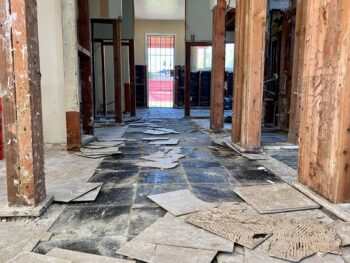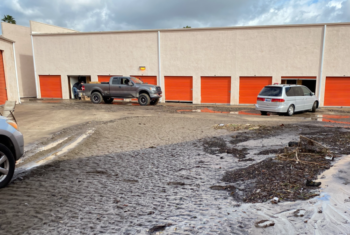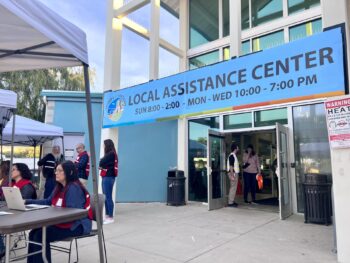The winter months can be more fire hazardous for most households, but the good news is that all of the hazards can be avoided if people are made aware of them and take precautions.
“It can be a great time of year and you don’t want to see that turn tragic because someone wasn’t diligent,” says Kelly Gaffrey of the San Diego County Fire Authority.
- 1. Cut Christmas trees
Most of the tree fires happen after Christmas, after a cut tree has dried out, and often start overnight when trees are left lit, Gaffrey says. Cut trees need to be properly watered. In our generally desert climate, people need to check water levels every day. Even then, eventually it will dry out. Put the tree out promptly for proper disposal or recycling after the holidays to reduce the risk for fire.
“Leaving it up much past Christmas or New Year’s, you could be asking for problems,” Gaffrey says. “It’s amazing how quickly a tree can burn up and everything around it too. The speed is just mind-boggling.”
Here’s a video that illustrates this point. The tree is fully engulfed in flames in 30 seconds.
Never place any tree near a heat source such as a fireplace, furnace or space heater. Unplug lights when leaving the house or going to sleep. Be especially careful if using lights that heat up — and don’t put them near heat sources, curtains or other flammable materials.
- 2. Overloaded electrical circuits
The more holiday lights the better, right? Well, that may not always be the case around your home. Safety must take the priority over dazzling, when it comes to stringing up lights or other electrical decorations. Electrical safety is especially important in older homes which weren’t wired to today’s electrical load limits. Back in the 1950s and 1960s, there weren’t microwaves and computers and other big electricity-drawing appliances.
Make sure you buy holiday lights that have been tested for safety by an independent laboratory. Check for a label. Follow directions for safety, don’t hang indoor lights outside – or vice versa –and don’t plug too many items into an electrical socket. Don’t string together more than 3 strands of lights, Gaffrey said. And don’t connect LED lights and non-LED light strands, he said.
- 3. Damaged holiday lights
Besides untangling your light sets, inspect them to make sure they are in good condition. This means checking for exposed wires or shattered bulbs and sockets since they pose a fire hazard. In most cases, light sets should be replaced unless it is just a bulb that needs changing. Sometimes pets can chew on wires, so you may need to inspect often. If you need to buy new lights, LED lights tend to be cooler and significantly reduce the risk of fire. LED lights are also shatterproof and shock resistant.
How big a danger are these? According to the National Fire Protection Association, from 2007 to 2011, firefighters across the nation responded to 230 house fires that began with a Christmas tree. Those fires resulted in 6 deaths, 22 injuries and $18.3 million worth of property damage.
Holiday lights and other decorative lighting were factors in 150 home fires in this same period.
- 4. Candles
Candles are a big part of season for many people, but they can be dangerous if left unattended while lit. They need to be placed on a sturdy surface out of reach for children and pets, and away from flammable materials including drapes. Use stable candleholders and use the appropriate size candle for the holder.
- 5. Fireplaces
The most important thing with fireplace safety is having it professionally maintained by a certified chimney sweep once a year, if it is used with any frequency, says Gaffrey. Never use excessive paper or flammable liquid to start a fire. Use a metal or glass screen to keep embers in the fireplace opening. Never leave a fire unattended or burning overnight.
- 6. Space Heaters
No one in other parts of the frozen country believes us when we say that San Diego can indeed get a little chilly, but it’s true. And during those times of the year, many people turn to space heaters rather than a furnace because it can be less expensive. This is especially true in large or older homes where the insulation is poor and heat escapes quickly. If you’re using a space heater, make sure it’s a good quality model that has been professionally tested for safety. Set up the heater with nothing around it such as drapes or furniture which can catch fire either from directly touching it or from radiant heat. Never leave a space heater on overnight; heat up your room before you go to bed and then shut it down, says Gaffrey. Be aware that space heaters draw a lot of electricity and should be plugged into its own outlet. Extension cords are not recommended.





